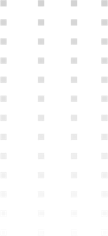New publication on the prediction of ply-ply friction for simulation software
Check the latest publication of Rens Pierik in which we improved our understanding of the ply-ply friction response of UD C/PAEK tapes through combined experimental and modeling work.
Excessive resistance against the movement of adjacent plies, or ply-ply friction, can lead to process-induced defects during hot press forming of thermoplastic composite laminates. To avoid the occurrence of defects on beforehand, use can be made of process simulations. However, a good understanding of the ply-ply friction is required to improve the constitutive models to allow for simulation of more complex parts.
Rens performed friction experiments on UD C/PAEK tapes, showing a typical response with a peak followed by a steady-state friction. The peak shear stress was successfully predicted by assuming a shear flow of the matrix material in the ply-ply interface, for which we measured the matrix viscosity and analyzed the matrix interlayer in the ply-ply interface. Further, Rens accurately described the steady-state friction by including a critical shear stress to represent wall slip, substantiating the concept of wall slip as the dominant underlying mechanism for the start-up friction response. These new insights will be used as a basis for future constitutive modeling of ply-ply friction. In the end, a better description of friction will improve the predictive capabilities of simulation software on defect generation during hot press forming to enable first-time-right defect-free manufacturing.
Rens has performed this research at the TPRC in close cooperation with the Production Technology research group of Remko Akkerman from the University of Twente. A special word of thanks goes out to NWO (Dutch Research Council) for financing and supporting this research project.
Schematic illustration of a ply-ply interface (upper-left corner) of two adjacent plies separated by the x-axis. The fiber edges (dashed lines) results in a matrix interlayer thickness distribution h(x), as illustrated in the upper graph. Movement of the top ply along the z-axis (fiber direction) results in a local shear rate (upper-right corner) and, due to h(x), a distribution of shear rates (middle graph). Consequently, a shear stress distribution appears when a certain matrix viscosity is considered as illustrated in the lower graph. The dashed grey line reflects the onset of strong slip in the fiber-matrix interface, which limits the viscous shear stress. Integration of the shear stress distribution with and without slip yields an accurate prediction of the measured peak and long-time friction response.




